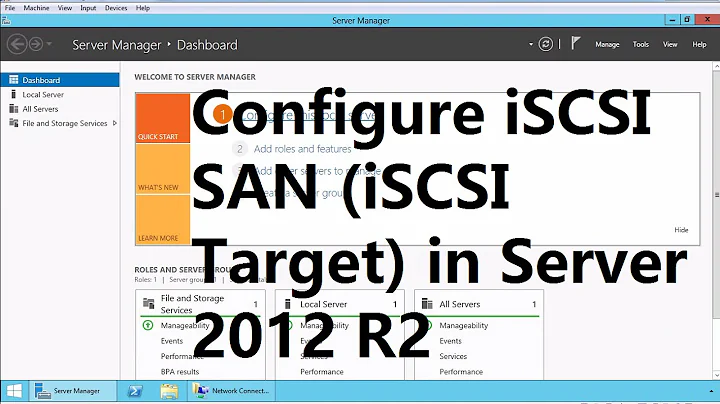Configuring HP "Multifunction" NIC for iSCSI SAN
Each NIC chip (that card only has one chip, each chip has two Ethernet ports) function as four separate devices. The OS will see two Ethernet NICs, one for each port. The OS will also see two iSCSI block devices, one for each port, which will not show up as Network Adapters. If you've got that, then you're on the right track.
First side note: Get HP's SUM/PSP and make sure the Firmware/Drivers/Management are updated or you'll be in a world of hurt, the original firmware and drivers have major issues.
You're configuration is substantially similar to mine. I'm running a P2000, pair of ProCurve 2510G switches, HP DL380 servers with the NC382i (integrated NICs, you've got -T which is the PCIe version of the same). This setup works quite well for my small cluster of Hyper-V hosts.
When you go to actually configure the targets and everything it gets a bit tricky, as half the configuration is in the BIOS (the HP NCU tool you've been using configures the same), and the other half in in Windows' mpiocpl and iscsicpl tools. If you're booting from iSCSI you'll have to make changes using the BIOS tool at boot time, the NCU tool will only allow limited changes, like none.
Second side note: Make sure the P2000's and the Hard Drives' firmware are updated as well. Similar problems... I swear HP should have paid me for helping them find every bug in their firmware.
Related videos on Youtube
fukawi2
Server Shepherd; Command Line Svengali; Tsar of Firewalls.
Updated on September 18, 2022Comments
-
fukawi2 almost 2 years
I am about to implement a SAN here using a HP P2000; the SAN itself is on-order (ETA a couple of weeks) so in the meantime I'm getting the rest of the equipment up and running.
The SAN has dual-controllers and I'm going to multipath the whole setup. Here is what the plan is for the SAN to look like:

I'm got the switches installed and configured; they are dedicated switches with all ports in the default VLAN except 1 which connects to my management VLAN.
Tonight's task was to install the HP "Multifunction" NIC's in the 2 existing servers (Windows 2008R2) that will be connecting to the SAN - They are HP NC382T which I bought for: 1) Dual port to be able to connect to both fabrics (yes, the NIC itself becomes a single PoF but the server is only 1RU and I can't physically fit 2 additional NIC's in) 2) It has a ToE
All installed OK, but I can't figure out the addressing. In the HP NCU (Network Configuration Utility) I've enabled both ports as iSCSI devices and given them static addresses as per the image, but Windows doesn't "see" that configuration. The 2 ports are still listed as ethernet adaptors (as expected) but the IP configuration doesn't exist. Windows has given them autoconf addresses (169.254.x.x) and there are no routes for 192.168.101/24 or 192.168.102/24.
NCU configured as per the HP guide: http://bizsupport.austin.hp.com/bc/docs/support/SupportManual/c00577553/c00577553.pdf
So, am I doing the right thing? I suspect configuring the ethernet ports "as normal" using Windows means the ToE won't be used.
Also, what should the SAN ports (the green A, B, C and D) be addressed as? I'm thinking: A: 192.168.101.1 B: 192.168.102.1 C: 192.168.101.2 D: 192.168.102.2
-
 Philip about 12 years
Philip about 12 years -
 Philip about 12 yearsHP NC382T Downloads for Windows Server R2 - The first three downloads (Drivers and Firmware) are what needs to be updated.
Philip about 12 yearsHP NC382T Downloads for Windows Server R2 - The first three downloads (Drivers and Firmware) are what needs to be updated. -
fukawi2 about 12 yearsLovely, that's just the info I needed :) So I can just disable the Ethernet devices this card provides.
-
 Philip about 12 yearsYou can disable them in the Networking Control Panel, yes. If you disabled them in Device Manager then HP NCU wouldn't work.
Philip about 12 yearsYou can disable them in the Networking Control Panel, yes. If you disabled them in Device Manager then HP NCU wouldn't work.




